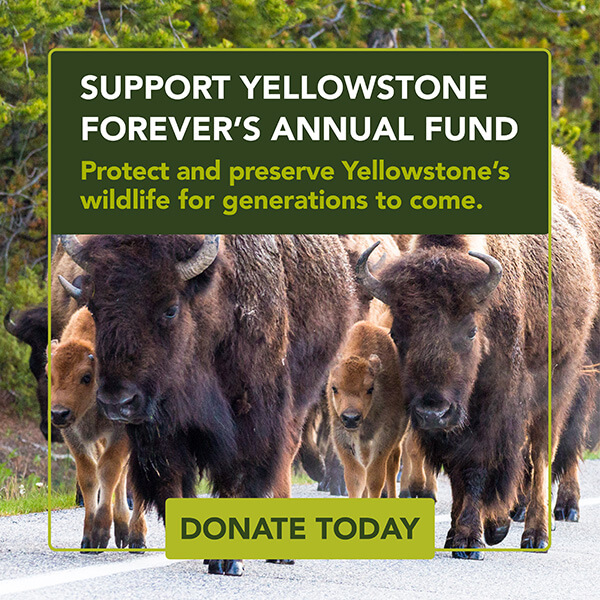Tomorrow’s Stewards
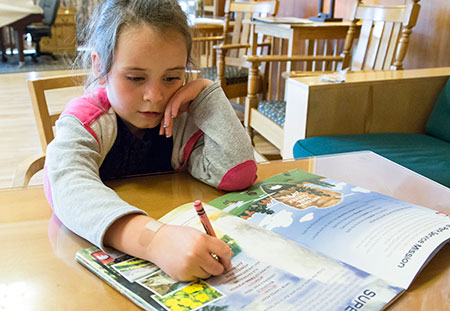
Yellowstone Forever supports projects that promote the understanding, appreciation, and stewardship of Yellowstone among the next generation.
Tomorrow’s Stewards PROJECTS
Expedition Yellowstone Student Scholarships
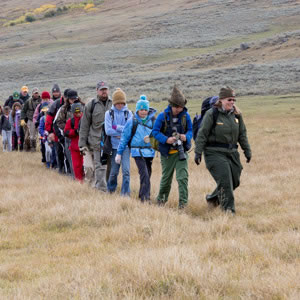 Photo Credit: Matt Ludin
Photo Credit: Matt LudinExpedition Yellowstone is a residential program providing experiential learning for school groups visiting the park. The award-winning curriculum for youth in grades four through eight includes field classes that investigate geology, wildlife, history, and environmental stewardship in Yellowstone. Throughout the week, students participate in hikes, science activities, journal writing, and group discussions. This all-inclusive approach allows students to develop a deeper understanding and appreciation of Yellowstone, and helps empower them to explore stewardship opportunities at home. The purpose of this project is to provide scholarships to support socioeconomically underserved students—especially those from Title I or American Indian schools in Idaho, Montana, and Wyoming—attending the Expedition Yellowstone program.
- $40 Funds one student for a day
- $200 Funds one student for a week
Yellowstone Youth Conservation Corps (YCC)
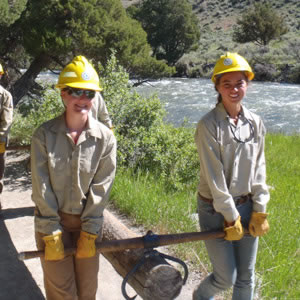 Photo Credit: NPS
Photo Credit: NPSThe Youth Conservation Corps (YCC) engages teams of 15- to 18-year-olds in leadership, education, recreation, and work activities. The work-based learning program completes a wide array of projects such as constructing fencing, conducting citizen science projects, and restoring trails. The program is challenging, educational, and fun, and offers participants opportunities to expand their horizons while building invaluable skills. This project will provide the funding necessary to support the seasonal management of the program, including food and supplies, weekend and evening supervision of minors, and educational and outdoor recreation activities. The YCC promotes the stewardship of Yellowstone and other wild places among the next generation, while providing much-needed labor for park priority projects.
- Funding Needed: $328,000 Annually
- $5,000 Funds one teen to attend this one-month program
Yellowstone to You
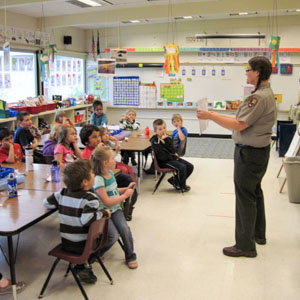 Photo Credit: NPS
Photo Credit: NPSMany schools and youth programs in the Yellowstone area lack the resources to arrange park visits for their participants. Taking Yellowstone to regional communities and schools helps engage a younger and more diverse audience and empowers educators to use Yellowstone in their classrooms to connect students to their park. This project supports the resources needed to operate the Yellowstone to You program, which sends park rangers into communities to teach about Yellowstone and grow the next generation of park stewards. Staff implement outreach programs at schools, community events, American Indian powwows, and educator workshops, mainly in Idaho, Montana, and Wyoming. The programs are intended to reach targeted audiences such as families, teachers, and students from socioeconomically disadvantaged populations—especially at Title I and American Indian schools.
- Funding Needed: $100,000 for 2 years
Tomorrow’s Stewards Program
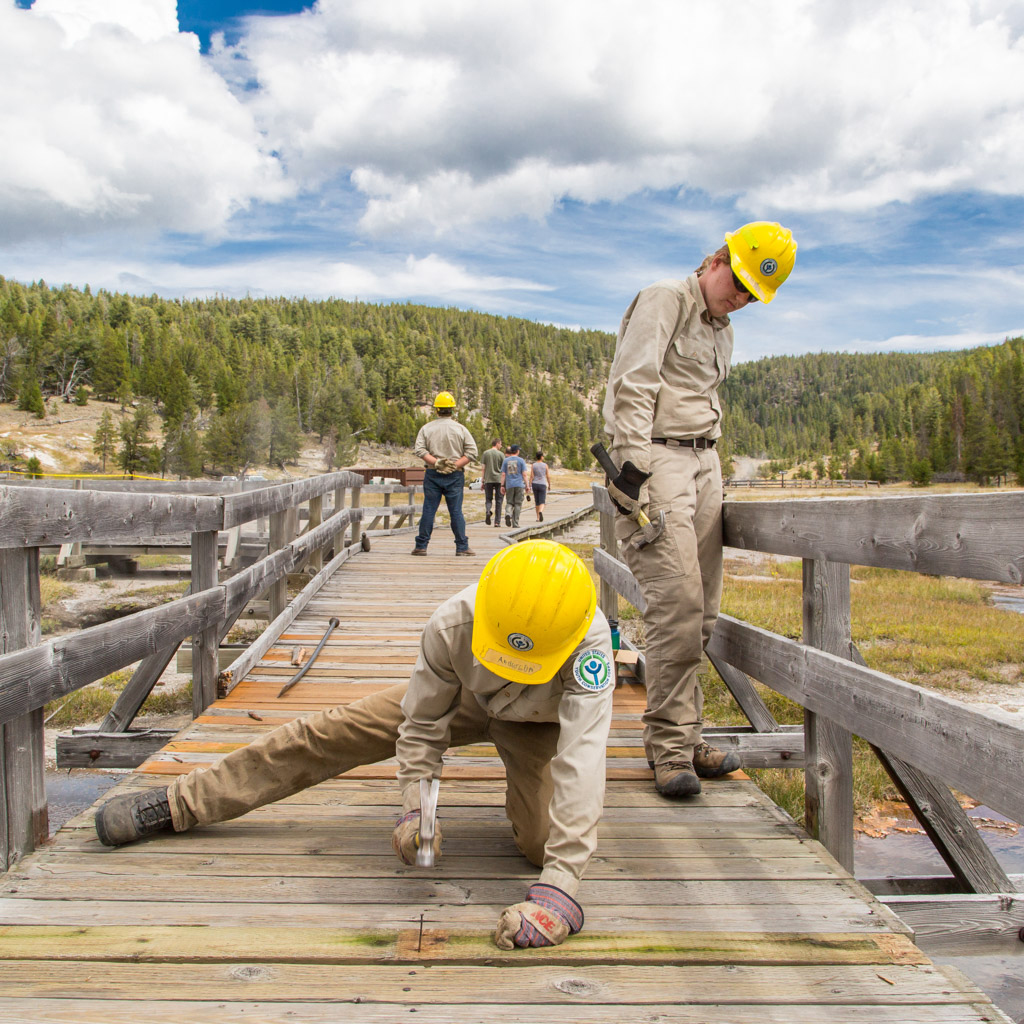 Photo Credit: NPS/Neal Herbert
Photo Credit: NPS/Neal HerbertThe Tomorrow’s Stewards Program engages young people in work-based learning and leadership education in Yellowstone. The principal purpose of the program is to provide opportunities for youth to learn about the environment by spending time working in national parks. Participants’ personal development is broadened and enriched through educational, leadership, and recreational experiences. The park also receives the benefit of completing much-needed conservation projects, including backlogged trail and maintenance projects that might not otherwise get completed. This program motivates youth participants to develop work and career skills such as positive interpersonal relationships, self-confidence, self-motivation, leadership, problem solving, teamwork, and hands-on technical skills.
Distance Learning for Youth
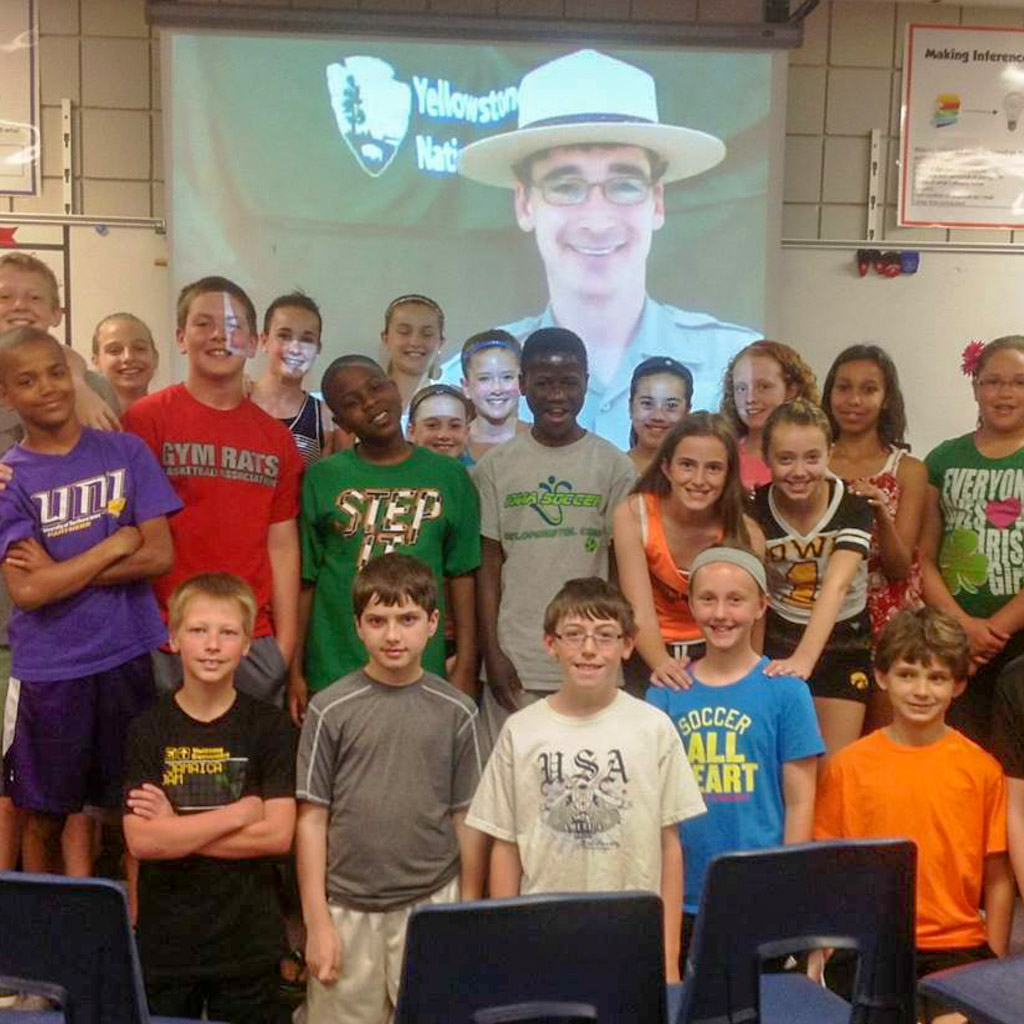 Photo Credit: NPS
Photo Credit: NPSMany people may never have the chance to visit Yellowstone National Park in their lifetime. However, the park can reach more individuals by visiting them in their schools with Distance Learning programs. Since 2011, Yellowstone has offered the opportunity for classrooms to have a park ranger visit them virtually through Skype or other video conference technology. Students learn about topics such as the Yellowstone Volcano or park ecology, wildlife, and history. They can also interview a ranger about their job. These cost-effective programs introduce Yellowstone to new audiences while using the park as a platform to teach curriculum-based content. Since demand for the program has been growing each year, this project aims to ensure Distance Learning is available to school groups across the country.
Yellowstone Science
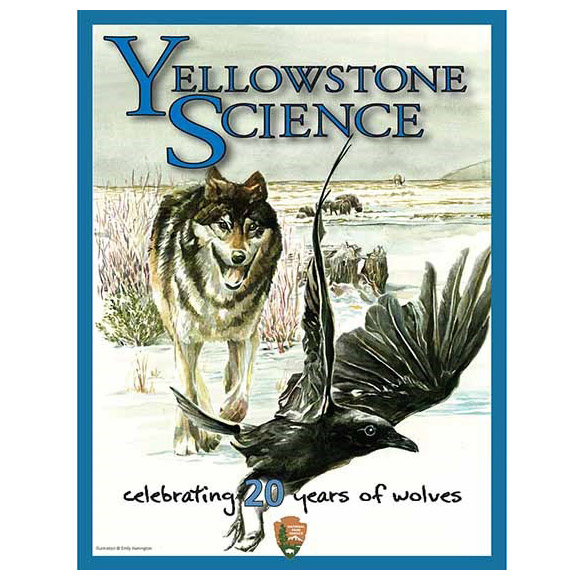 Photo Credit: NPS
Photo Credit: NPSYellowstone Science, first published in 1992, is a journal devoted to Yellowstone’s natural and cultural resources. It features articles about research, conferences, or other special events in the Greater Yellowstone Ecosystem that provide scientists with an opportunity to communicate and exchange ideas, and keeps the public informed about scientific endeavors. The publication is now available as a digital subscription in addition to print, providing even greater circulation and reducing the park’s carbon footprint. The purpose of this project is to support the effort to communicate Yellowstone’s vast and complex array of scientific endeavors, which are used to inform and guide management decisions, as well as update the public on the park’s conservation issues and challenges.
Yellowstone Live: Enhanced Functions
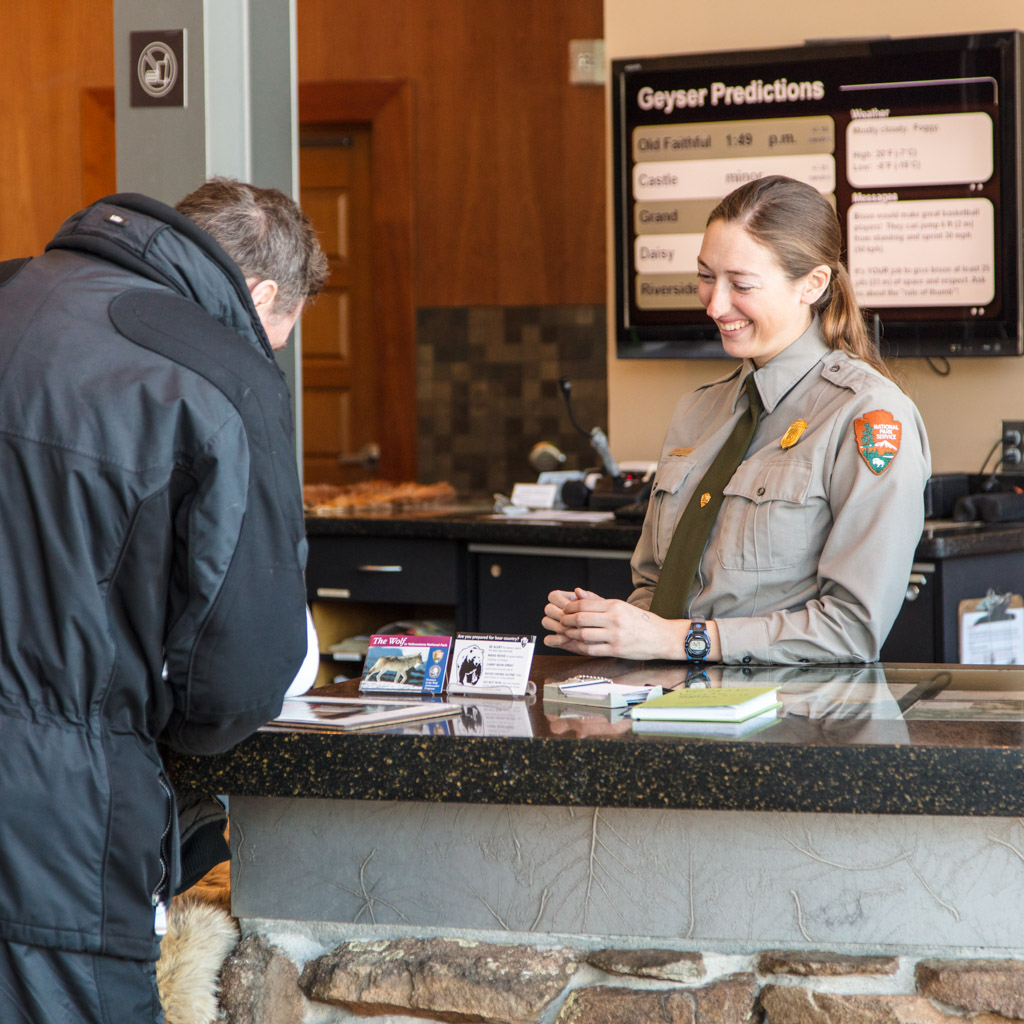 Photo Credit: NPS/Jacob W. Frank
Photo Credit: NPS/Jacob W. FrankYellowstone National Park’s infrastructure spans an area larger than Rhode Island and Delaware combined. It is made up of five park entrances, more than 1,300 miles of roads and trails, more than 1,500 buildings, and thousands of campsites. Natural and human-caused events can close these facilities without warning, and a lack of accurate and timely information can significantly impact visitor safety and enjoyment. This project’s purpose is to continue to develop a single, integrated system that allows park staff to quickly identify changes in the status of facilities, roads, fires, or weather, and share information with visitors. This system currently provides information through the park website, apps, and visitor center monitors. Improvements will expand visibility and ease of use, and support delivery of more detailed information.
Biennial Scientific Conference
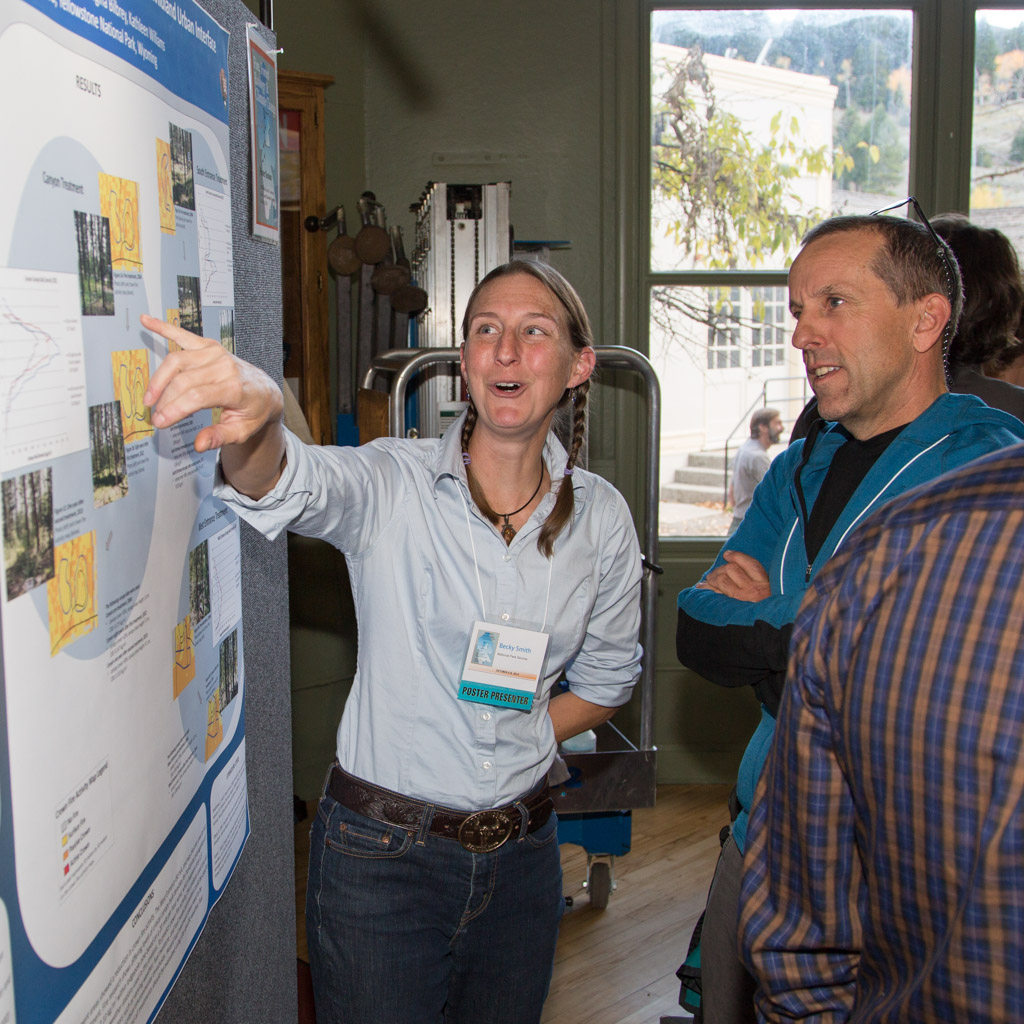 Photo Credit: NPS/Neal Herbert
Photo Credit: NPS/Neal HerbertThe greater Yellowstone biennial scientific conference, which began in 1991, encourages awareness and application of high-caliber scientific work on the region’s natural and cultural resources. The conference actively engages a variety of stakeholders and provides a forum to highlight the challenges and success stories within the Greater Yellowstone Ecosystem. Through field trips, presentations, and discussions, the conferences offers researchers, park managers, conservation groups, and partners the ability to share knowledge and discuss issues pertaining to Yellowstone’s resources. In partnership with a host of county, state, federal, and private organizations, this project will sponsor the conference to ensure this excellent, collaborative opportunity remains available to participants.
Innovating Resource Education with Evolving Technology
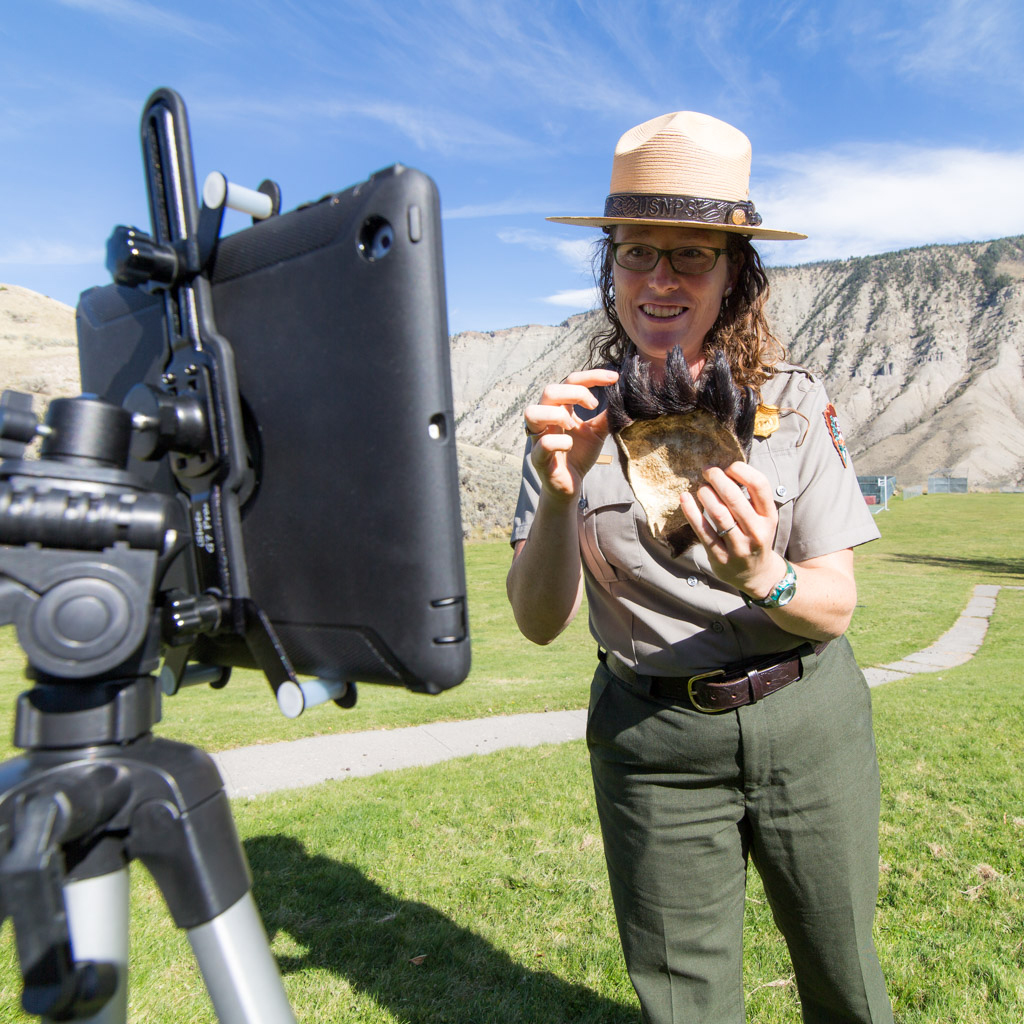 Photo Credit: Matt Ludin
Photo Credit: Matt LudinYellowstone National Park’s website and social media channels are some of the most visited in the entire national park system. While nothing replaces an in-person park visit, there are many ways to bring the wonders of Yellowstone to people worldwide through technology. This project will fund a new park orientation film to be shown in visitor centers and online, and a new, in-depth video on the park’s water resources, waterfalls, and headwater systems. Additional goals include the purchase of equipment for expanded distance learning efforts, live ranger projects, and continued development of the official Yellowstone National Park apps. Funds will also support the team of volunteers who operate the live-streaming webcam at Old Faithful, which receives nearly five million page views each year.
Publications: Inspiring Stewardship in Underserved Audiences
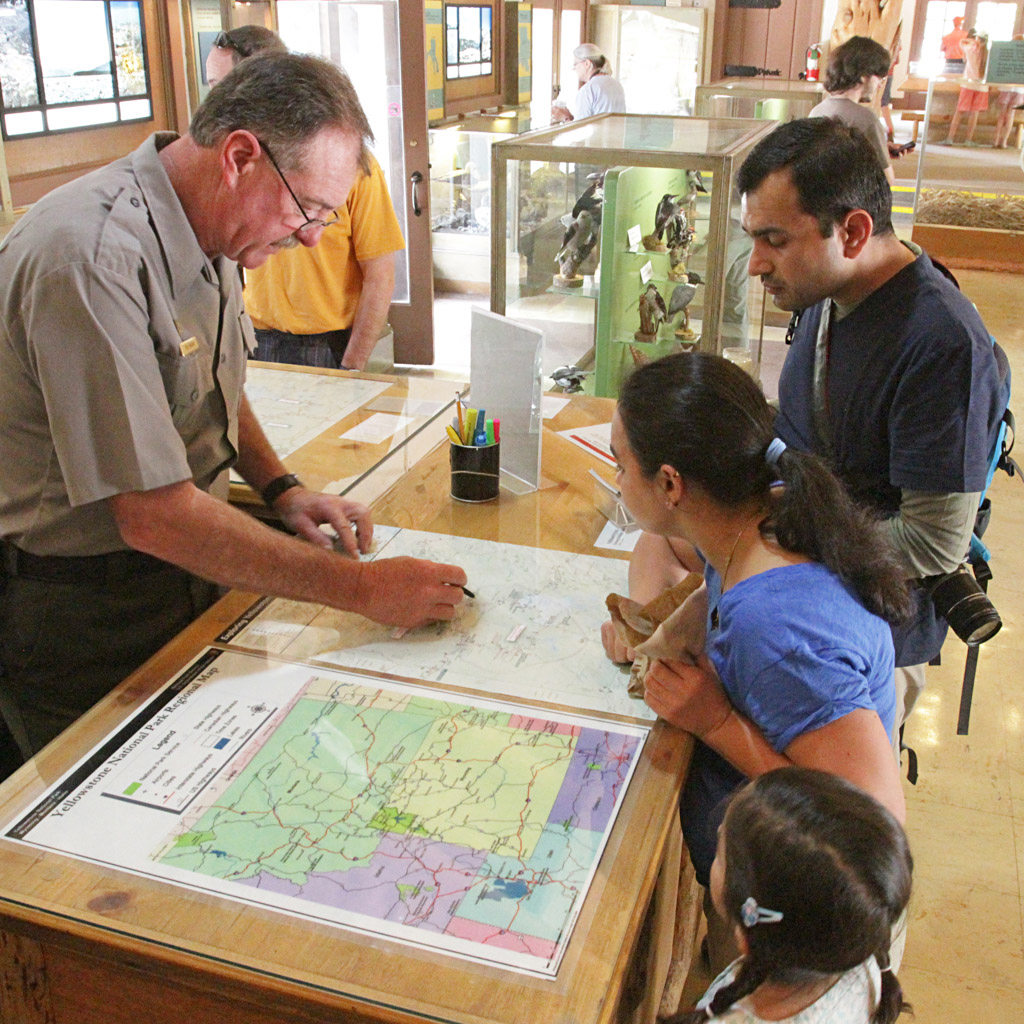 Photo Credit: NPS/Jim Peaco
Photo Credit: NPS/Jim PeacoPublications provide critical information to Yellowstone visitors in an efficient and consistent format. Print media complements the personal connections visitors make with park rangers and reinforces key safety and resource-protection messages provided by other signs and exhibits. Plus, they are portable, extending their usefulness through an entire visit and beyond. This project delivers those benefits specifically to the underserved audiences of non-English speakers and people with disabilities. New publications will inform and inspire these visitors to connect with Yellowstone and become park stewards, while helping to overcome barriers to understanding basic safety messages. This project will support printing costs for essential publications that must be reprinted annually.
Interactive Mobile Learning for Families
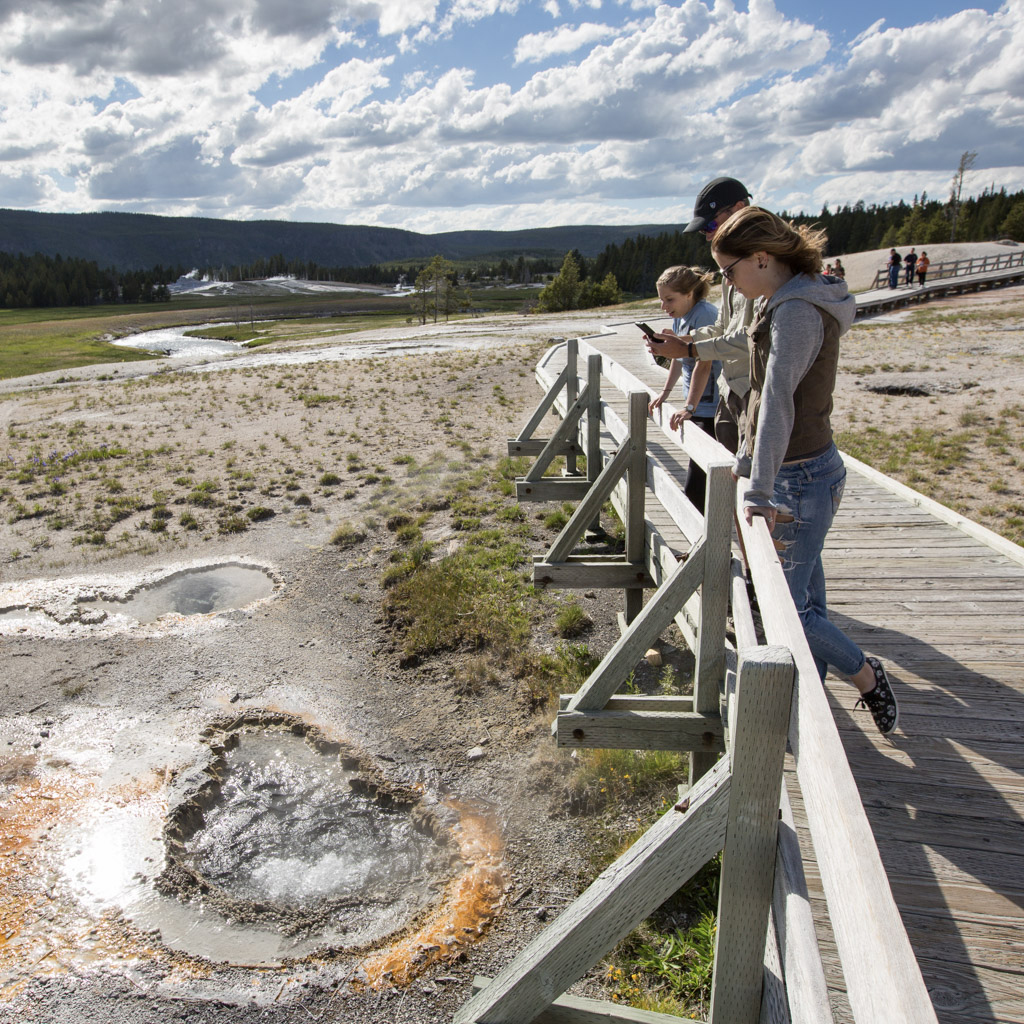 Photo Credit: NPS/Neal Herbert
Photo Credit: NPS/Neal HerbertHundreds of thousands of families journey to Yellowstone each year looking for shareable stories to help them to connect with the cultural history and natural wonders of the park. This project outlines an innovative and experimental research project to study the potential of family learning through place-based and interactive mobile stories. Given how universal mobile technology has become in the lives of children, learning is no longer constrained to formal school structure; new, informal ways to learn and engage in a national park are emerging. This project takes speculation about such potential and puts these ideas to the test in a real-time setting, with real users in real situations. This project will fund five faculty researchers and one research assistant to travel to Yellowstone, plus on-site tool development costs.
NPS-American Indian Interpretation Collaborative
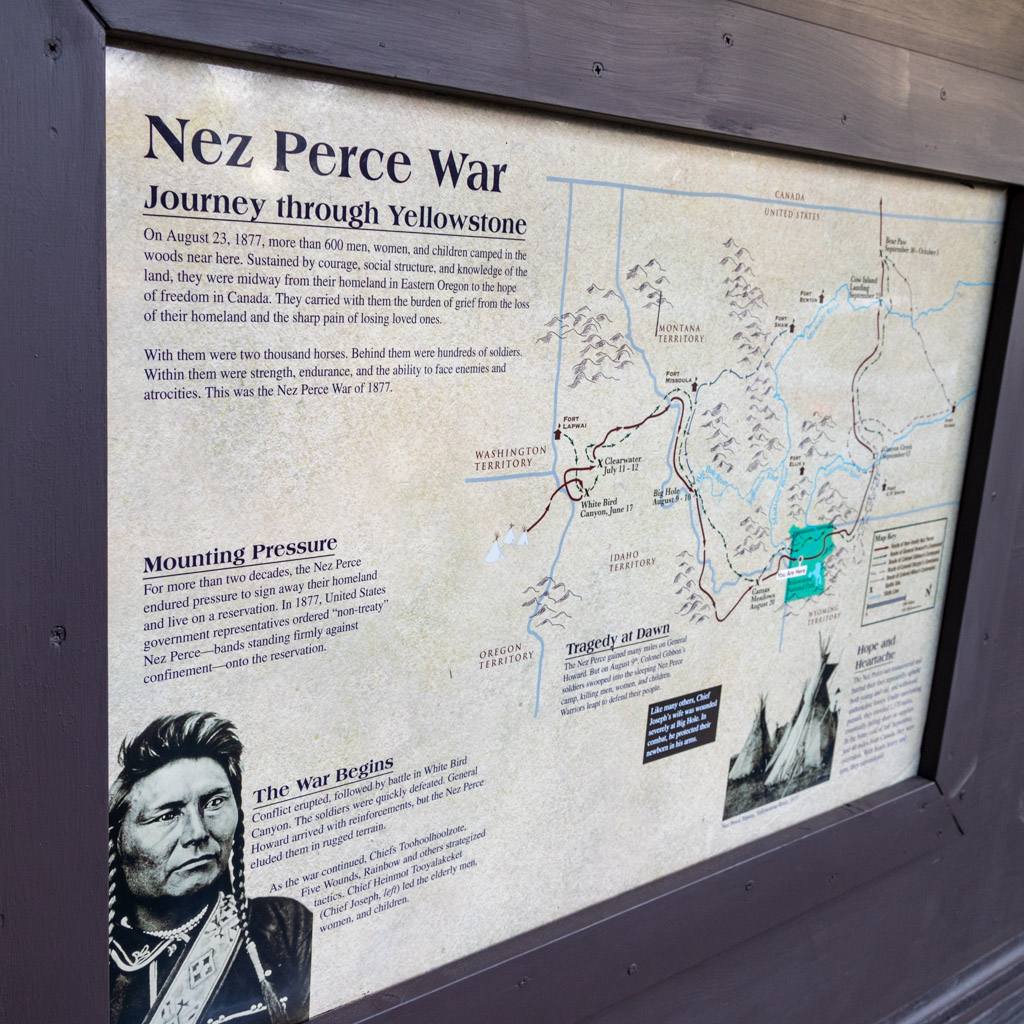 Photo Credit: Matt Ludin
Photo Credit: Matt LudinYellowstone National Park has 26 Associated Tribes that either have evidence of their ancestral presence in Yellowstone or have documented cultural connection to the park. Members of these tribes, along with the general public, have expressed interest in seeing more education about American Indians in Yellowstone. This project will identify and develop opportunities to interpret the tribes’ cultural and historic associations with Yellowstone. In cooperation with tribal representatives, the park will create a variety of media—such as exhibits, publications, web content, and videos—and cultural demonstrations, storytelling, and other programs featuring American Indian speakers and performers.

